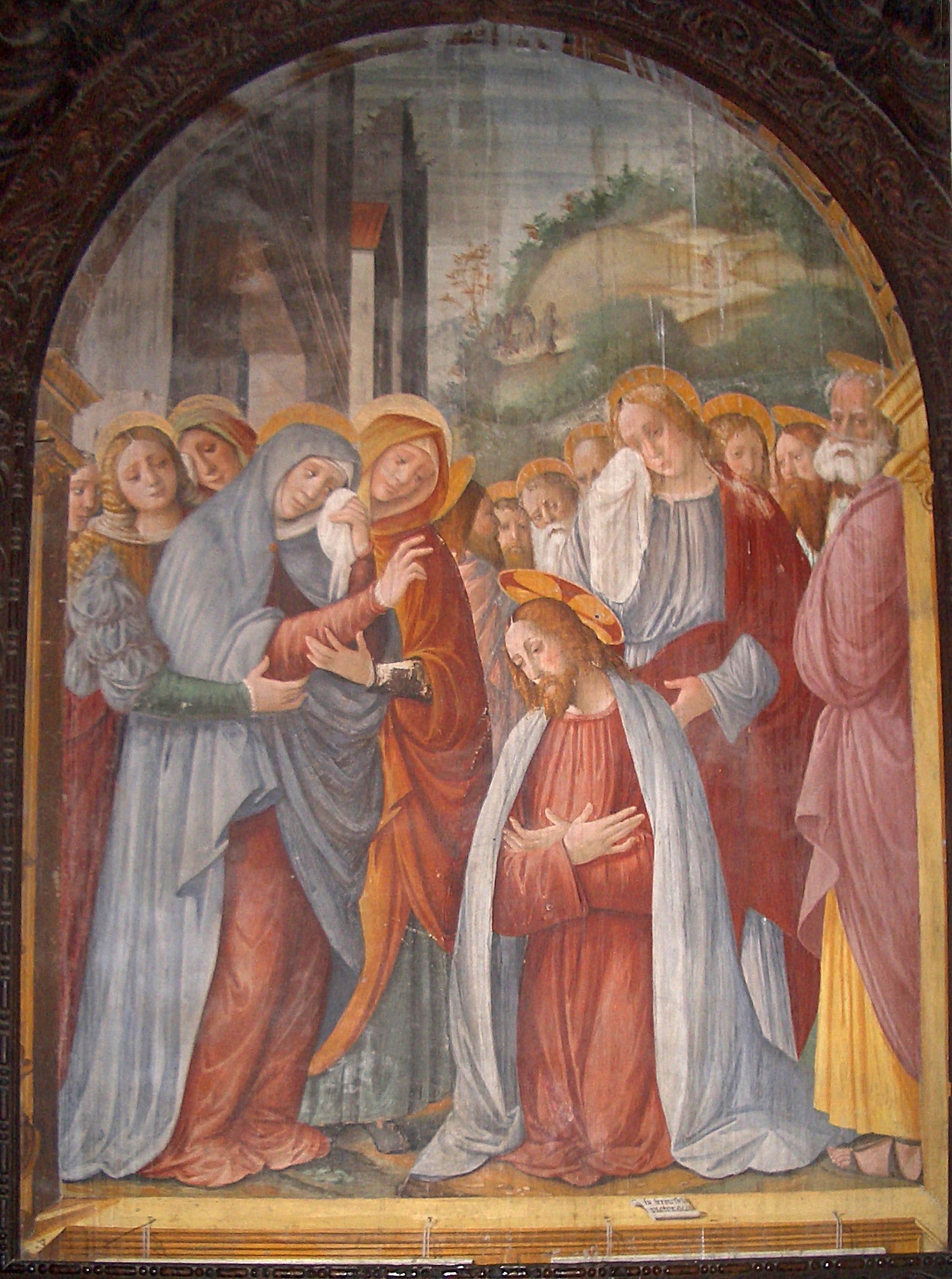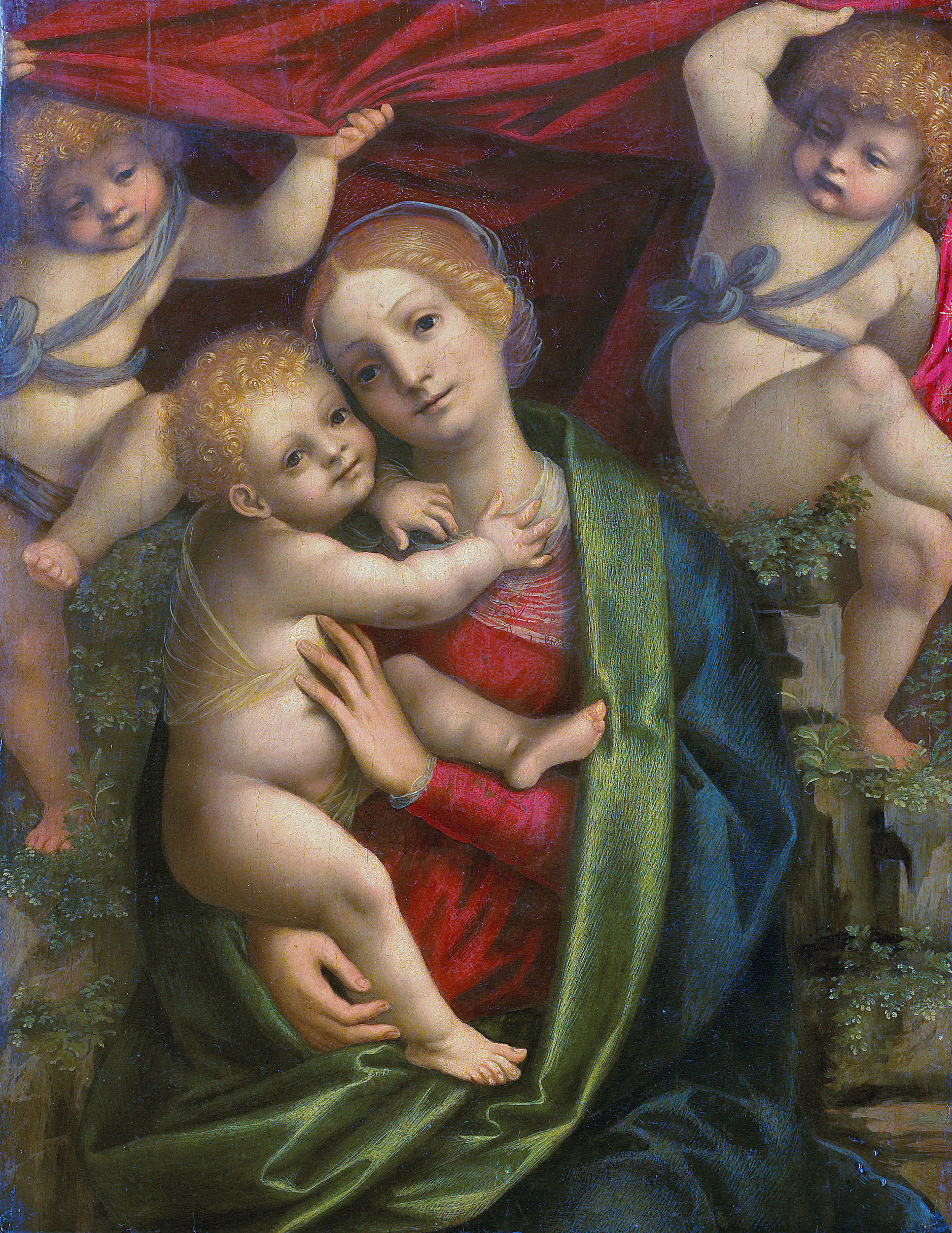|
Fermo Stella
Fermo Stella (c. 1490 – c. 1562) was an Italian painter of Lombardy and Piedmont, mostly in rural churches and sanctuaries. Art historians from the 19th century cite erroneously Fermo as active at dates that range from the 15th century to 1577. Biography Born in Caravaggio, Lombardy, Caravaggio, he was a pupil or a follower of Gaudenzio Ferrari. Collaboration is suggested as early as circa 1510 with Gaudenzio. Documents show they worked together in Morbegno in 1522. Fermo has left a number of sacred subjects throughout the north Lombardy and east Piedmont, including at the Sacro Monte of Varallo, where he worked alongside Bernardino Lanino circa 1530. He painted the ''Polyptych of St Ambrose'' (1547) for the church of Sant'Ambrogio, Omegna. He also appears to have painted the ''Polyptych'' in the church of Sant'Alessandro della Croce, Bergamo. [...More Info...] [...Related Items...] OR: [Wikipedia] [Google] [Baidu] |
Varallo SMdelleGrazie Fermo Stella
Varallo may refer to: Persons * Varallo (surname) * Tanzio da Varallo (c. 1575/1580 – c. 1632/1633), Italian painter Places * Varallo Pombia, an Italian comune in the province of Novara * Varallo Sesia, an Italian comune in the province of Vercelli ** Novara–Varallo railway *** Varallo Sesia railway station * Varallo's, the oldest restaurant in Tennessee {{disambiguation, geo ... [...More Info...] [...Related Items...] OR: [Wikipedia] [Google] [Baidu] |
Caravaggio, Lombardy
Caravaggio (; lmo, label=Bergamasque, Careàs ) is a town and ''comune'' in the province of Bergamo, in Lombardy, Italy, east of Milan. History The town received the honorary title of city with a presidential decree on December 22, 1954. Geography Caravaggio borders with the municipalities of Bariano, Brignano Gera d'Adda, Calvenzano, Capralba ( CR), Fornovo San Giovanni, Misano di Gera d'Adda, Morengo, Mozzanica, Sergnano (CR) and Treviglio. Its ''frazioni'' are Masano and Vidalengo. Main sights The city is best known for the Sanctuary (15th century). Other sights include: *The Gallavresi Palace (or the Marchioness Palace), now the Town Hall. It dates to the second half of the 13th century. *Church of ''San Fermo e Rustico'', in Lombard-Gothic style, built in the 13th century over a pre-existing holy edifice. The two aisles were added in 1429. It has a façade in brickwork with a marble central portal, surmounted by a large rose window. It is flanked by a high bell ... [...More Info...] [...Related Items...] OR: [Wikipedia] [Google] [Baidu] |
Gaudenzio Ferrari
Gaudenzio Ferrari (c. 1471 – 11 January 1546) was an Italian painter and sculptor of the Renaissance. Biography Gaudenzio was born to Franchino Ferrari at Valduggia in the Valsesia in the Duchy of Milan. Valduggia is now in the Province of Vercelli in Piedmont. He is said to have first learned the art of painting at Vercelli from Gerolamo Giovenone. He subsequently studied in Milan, in the school of the Cathedral artisan Giovanni Stefano Scotti, and perhaps alongside Bernardino Luini. Circa 1504 he proceeded to Florence. It was once thought that he later moved to Rome. He died in Milan. Gaudenzio was not related to Defendente Ferrari (c.1490–1535) a painter from Chivasso, nor to Eusebio Ferrari (1508–1533) the painter from Vercelli. Mature work His initial pictorial style may be considered as derived mainly from the old Milanese school, which had imbibed the classic influence of Leonardo and pupils such as Bramantino. However, the provincial impetus was also strong, as ... [...More Info...] [...Related Items...] OR: [Wikipedia] [Google] [Baidu] |
Morbegno
Morbegno (; lmo, Mürbegn ; german: Morbend) is a little town in the low Valtellina Valley in Italy, on the left side of the Adda river. It is part of the province of Sondrio of Lombardy. In 2007, it started a project to become a leader in sustainability, by involving the population in a participatory design process, presently labelled "Morbegno 2020". Morbegno is partnering with the international non-profit organization The Natural Step to design a vision of what the people living in Morbegno want to create in the long term, and choose the strategic path to move towards the vision from the present reality. Morbegno has also been selected as a pilot city in the Di.Mo.Stra. project, by the Association of Italian Municipalities for the diffusion of Strategic Planning models. Finally, on November 21, 1966, it received the honorary title of town with a presidential decree. Twin cities * Llanberis, Wales Wales ( cy, Cymru ) is a Countries of the United Kingdom, country that ... [...More Info...] [...Related Items...] OR: [Wikipedia] [Google] [Baidu] |
Bernardino Lanino
Bernardino Lanini or Lanino (c. 1512 – c. 1582) was an Italian painter of the Renaissance period, active mainly in Milan. Biography He was born in Mortara near Pavia. descriptive entry for the painting of the Annunciation. He trained as a pupil of the painter . In Milan, he painted a ''Last Supper'' for the church '' San Nazaro Grande''. He painted a ''Holy family'' for the church of , now on display in the ... [...More Info...] [...Related Items...] OR: [Wikipedia] [Google] [Baidu] |
Omegna
Omegna (, , ) is a ''comune'' (municipality) in the Province of Verbano-Cusio-Ossola in the Italian region Piedmont, located about northeast of Turin and about southwest of Verbania at the northernmost point of Lago d’Orta and traversed by the Nigoglia, the lake's sole outflow. A lively street market is held every Thursday morning along the lakeside boulevard. A daily ferry service connects Omegna with towns and villages around the lake. History The presence of ancient settlements in the area has been proved by excavations held in the ''frazione'' of Cireggio, archaeological findings dating from the late Bronze and Iron Ages. Omegna is mentioned in 1221 AD, when the population gave itself to the commune of Novara. In the 19th and early 20th century, it became an industrial centre that was for many years the primary Italian production centre for pots and small home appliances in Italy; the population was contemporaneously increased by immigrants. In 1913 Omegna was conne ... [...More Info...] [...Related Items...] OR: [Wikipedia] [Google] [Baidu] |
Sant'Alessandro Della Croce, Bergamo
Sant'Alessandro della Croce is a Baroque architecture, Baroque style, Roman Catholic church located on Via Pignolo in Bergamo, region of Lombardy, Italy. History The church was erected in 1675 at the site of a prior church. The design is attributed to the Trezzini family. The church was complete by 1737, but the facade was not only complete until 1922, in a project by Virgilio Muzio. Among the works inside the church is a ''Coronation of the Virgin'' (1576) by Giovanni Battista Moroni, and canvases by Giovanni Paolo Cavagna and Enea Salmeggia (1621). A canvas of ''St Carlo Borromeo tending those afflicted with plague'' (1720) by Giovanni Battista Parodi. The decoration of the ''Chapel of Suffragio'' (1730) was painted by Sebastiano Ricci, who depicted ''St Gregory the Great intercedes with the Virgin''. The chapel was also has a canvas by Gianbettino Cignaroli, Cignaroli depicting ''Story of Judas Maccabee'' (1743). Cignaroli also painted a large ''Deposition'' (1745) located in th ... [...More Info...] [...Related Items...] OR: [Wikipedia] [Google] [Baidu] |
1490s Births
*
{{Number disambiguation ...
149 may refer to: *149 (number), a natural number *AD 149, a year in the 2nd century AD * 149 BC, a year in the 2nd century BC *British Airways Flight 149, a flight from LHR to Kuwait City International Airport; the aircraft flying this flight was destroyed by Iraqi troops See also * List of highways numbered 149 The following highways are numbered 149: Canada * Prince Edward Island Route 149 Costa Rica * National Route 149 (Costa Rica), National Route 149 India * National Highway 149 (India) Japan * Japan National Route 149 United States * Alabama St ... [...More Info...] [...Related Items...] OR: [Wikipedia] [Google] [Baidu] |
1560s Deaths
Year 156 ( CLVI) was a leap year starting on Wednesday (link will display the full calendar) of the Julian calendar. At the time, it was known as the Year of the Consulship of Silvanus and Augurinus (or, less frequently, year 909 '' Ab urbe condita''). The denomination 156 for this year has been used since the early medieval period, when the Anno Domini calendar era became the prevalent method in Europe for naming years. Events By place America * The La Mojarra Stela 1 is produced in Mesoamerica. By topic Religion * The heresiarch Montanus first appears in Ardaban (Mysia). Births * Dong Zhao, Chinese official and minister (d. 236) * Ling of Han, Chinese emperor of the Han Dynasty (d. 189) * Pontianus of Spoleto, Christian martyr and saint (d. 175) * Zhang Zhao, Chinese general and politician (d. 236) * Zhu Zhi, Chinese general and politician (d. 224) Deaths * Marcus Gavius Maximus, Roman praetorian prefect * Zhang Daoling, Chinese Taoist master (b. AD 34 ... [...More Info...] [...Related Items...] OR: [Wikipedia] [Google] [Baidu] |
People From Caravaggio, Lombardy
A person (plural, : people) is a being that has certain capacities or attributes such as reason, morality, consciousness or self-consciousness, and being a part of a culturally established form of social relations such as kinship, ownership of property, or legal obligation, legal responsibility. The defining features of personhood and, consequently, what makes a person count as a person, differ widely among cultures and contexts. In addition to the question of personhood, of what makes a being count as a person to begin with, there are further questions about personal identity and self: both about what makes any particular person that particular person instead of another, and about what makes a person at one time the same person as they were or will be at another time despite any intervening changes. The plural form "people" is often used to refer to an entire nation or ethnic group (as in "a people"), and this was the original meaning of the word; it subsequently acquired its us ... [...More Info...] [...Related Items...] OR: [Wikipedia] [Google] [Baidu] |
16th-century Italian Painters
The 16th century begins with the Julian year 1501 ( MDI) and ends with either the Julian or the Gregorian year 1600 ( MDC) (depending on the reckoning used; the Gregorian calendar introduced a lapse of 10 days in October 1582). The 16th century is regarded by historians as the century which saw the rise of Western civilization and the Islamic gunpowder empires. The Renaissance in Italy and Europe saw the emergence of important artists, authors and scientists, and led to the foundation of important subjects which include accounting and political science. Copernicus proposed the heliocentric universe, which was met with strong resistance, and Tycho Brahe refuted the theory of celestial spheres through observational measurement of the 1572 appearance of a Milky Way supernova. These events directly challenged the long-held notion of an immutable universe supported by Ptolemy and Aristotle, and led to major revolutions in astronomy and science. Galileo Galilei became a champion o ... [...More Info...] [...Related Items...] OR: [Wikipedia] [Google] [Baidu] |



_1938.jpg)
